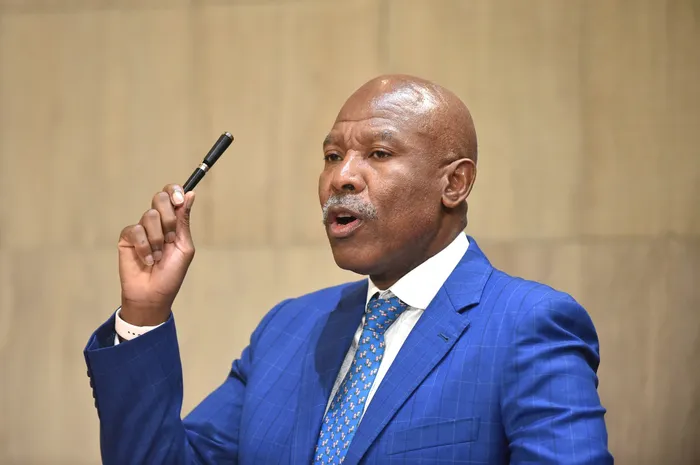Repo rate cut provides much-needed relief for South African consumers
CONSUMERS

South African Reserve Bank governor Lesetja Kganyago. As South Africa's festive season approaches, the announcement of a 25 basis point cut in the repo rate brings much-needed relief for consumers grappling with rising costs. Discover how this decision impacts the economy and sets the stage for potential recovery ahead.
Image: Thobile Mathonsi / Independent Newspapers
South Africans were given some relief ahead of the festive season that is about to kick off after the South African Reserve Bank dropped the repurchase rate for the country by 25 basis points (BPS), taking it from 7.00% to 6.75% per annum
This translates to the prime lending rate in South Africa decreasing from 10.50% to 10.25%.
This comes after the Sarb's Monetary Policy Committee (MPC) met on Thursday, with consumer inflation rising to its highest level in more than a year.
The governor said that the MPC's decision was unanimous.
"Members agreed there was scope now to make the policy stance less restrictive, in the context of an improved inflation outlook," Sarb governor Lesetja Kganyago said on Thursday.
Kganyago highlighted a global economic context defined by uncertainty and varying inflationary pressures, noting that while inflation stabilised in the Euro area, deflation risks loom over China and inflation spikes persist in the UK, Japan, and the United States. “In emerging markets, by contrast, inflation has eased. In South Africa, growth is steadier than last year, with a revised growth forecast of 1.3% for 2025,” he remarked.
Frank Blackmore, lead Economist at KPMG South Africa told Business Report that there was an array of data that backed the Sarb's move to cut the repo rate.
"A more benign inflationary environment for South Africa on the back of an improved, strengthening rand, oil prices that remain at lower levels, as well as a sovereign debt upgrade," he said.
Blackmore said, "The inflationary expectations continued to move towards the 3% target rate for this period. As long as these trends continue we can expect more such reductions in interest rates over the coming months, even though monthly inflation readings are expected to increase marginally for the rest of this year, before again decreasing at the beginning of next year. Lower interest rates will contribute to healthier consumer purchases and hopefully also to greater business investment in the economy, leading to a higher GDP growth rate, over the medium term."
Finance Minister Enoch Godongwana recently endorsed a tighter 3% inflation target, replacing the previous tolerance range of 3% to 6%.
Kganyago clarified that while the aim is to stabilise inflation at 3%, the Sarb understands that achieving this exact number may not always be feasible.
FNB CEO Harry Kellan welcomed the Sarb’s decision, emphasising that it would boost consumer and business confidence, a vital element for reviving the economy in light of current challenges.
With the festive season approaching, the lower borrowing costs are expected to stimulate spending and drive economic growth, despite the persistent challenges posed by inflationary pressures.
According to Kellan, the recent indicators of economic improvement, combined with South Africa's favourable financial outlook, underscore the need for consumers to manage their debt, build savings, and seize the opportunities presented by these shifting economic conditions.
While the country may have cheered at the interest rates being cut, Neil Roets, CEO of Debt Rescue, voiced the stark realities faced by millions of South Africans.
Roets said that while the 25 BPS repo rate is a step in the right direction for the country, the reality is that the impact of this on ordinary households will be minimal, and not enough to pull millions of South Africans out of the financial stronghold of debt and poverty, as they head into the festive season, one of the most demanding times of the year on their finances.
He said the new 3% inflation target and the repo rate cut signal a long-term commitment to financial stability, and that it is commendable that government went ahead with the rate cut, in light of the inflation figures which came in at 3.6% for October, 3.4% up from September’s figures.
“High inflation is a key contributor to the erosion of finances and lifestyles of consumers, as it leads to a higher cost of living, and reduced consumer spending and investment, making everyday goods and services more expensive and decreasing the value of money.”
He pointed out that years of escalating prices for food, electricity, transport, and essential goods have eroded incomes so severely that modest reductions in borrowing costs barely register at the household level.
“The relentless price increases and consistently high interest rates have deepened the pain for South African households, with many families still spending the majority of their income servicing debt, while millions more struggle to afford the very basics in terms of food and other essentials. The truth is that factors like the repo rate and food price monitoring, when managed, can relieve the confluence of pressures on consumers and I believe much more urgent action is needed, especially from the major retailers who benefit from high food prices,” Roets said.
The latest figures show that 16-million people across the country have inadequate or severely inadequate access to food and these translate into crisis levels of hunger.
“An impending hunger epidemic should be at the top of the list of concerns for government and business. The tide needs to turn and fast, or we are looking at a social catastrophe beyond comprehension. The question is: for how much longer can South Africans still hold on?" Roets asked.
As South Africa navigates a complex economic landscape, the repo rate reduction offers a glimmer of hope for consumers and businesses alike, signalling a necessary step towards fostering a more resilient economy.